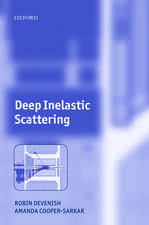In Situ Uranium Stabilization Through Polyphosphate Remediation
Autor D.M. Wellman, E.M. Pierce, V.R. Vermeul, S.V. Mattigod, E.L. Richards, M D Williams, J.S. Fruchter, J.P. Icenhoweren Limba Engleză Paperback – 30 sep 2008
Preț: 227.76 lei
Preț vechi: 309.57 lei
-26% Nou
Puncte Express: 342
Preț estimativ în valută:
43.59€ • 45.25$ • 36.34£
43.59€ • 45.25$ • 36.34£
Carte disponibilă
Livrare economică 01-15 martie
Preluare comenzi: 021 569.72.76
Specificații
ISBN-13: 9781604569407
ISBN-10: 1604569409
Pagini: 121
Ilustrații: tables, charts & colour illus
Dimensiuni: 156 x 227 x 10 mm
Greutate: 0.24 kg
Editura: Nova Science Publishers Inc
ISBN-10: 1604569409
Pagini: 121
Ilustrații: tables, charts & colour illus
Dimensiuni: 156 x 227 x 10 mm
Greutate: 0.24 kg
Editura: Nova Science Publishers Inc
Cuprins
Preface; Background; Experimental Methods for Polyphosphate Technology Development; Autunite and Apatite Formation; Apatite and Autunite Longevity; Materials and Methods for Pilot-Scale Field Demonstration of Polyphosphate Technology; Results and Discussion; Apatite and Autunite Formation; Dynamic Sequestration of Uranium; Apatite and Autunite Longevity; Pilot-Scale Field Studies; Summary and Conclusions; Acknowledgments; Index.











